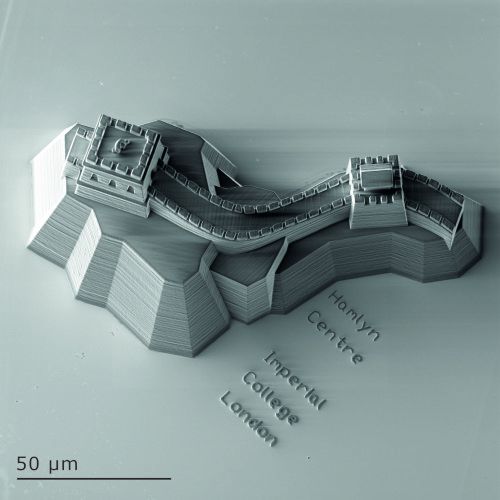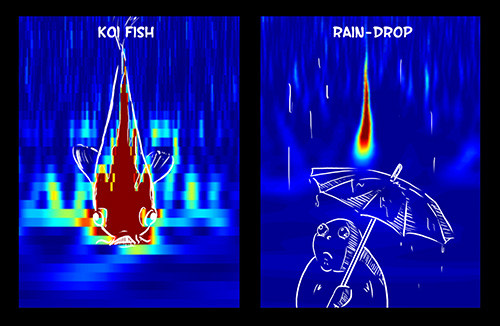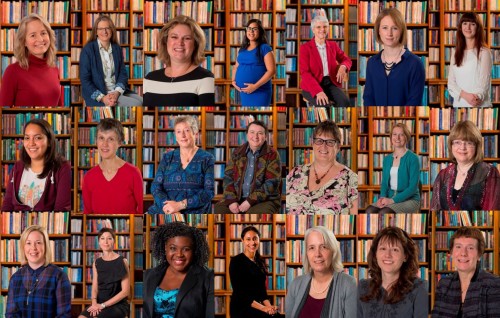Tag archives: art and science
Primal colours across the spectrum, impossible space engines
By Tushna Commissariat
Physicists and artists have long been intrigued and drawn in by the various mysteries that light and its many colours offer. In the latest installation to be unveiled at the Natural History Museum in London, artist Liz West has unveiled her stunning new work dubbed Our Spectral Vision. The exhibit aims to delve into the long and complex history of the development of colour and vision “through the eyes of nature”. Our regular readers will recall the many physics papers that look into the same, from the structural colour of butterflies to the nanostructures in avian eggshells to the mantis shrimp’s visual superpowers. West’s exhibit deals with many of these topics and more including some fantastic “350 rarely seen specimens, from beautiful birds to fossils of the first organisms with eyes”. If you are based in the UK, do visit the exhibit and otherwise, take a look at the video above to see through West’s eyes.
View all posts by this author | View this author's profile
Dinner that’s out of this world, Higgs pizza and a cosmic symphony
By Michael Banks and Tushna Commissariat
Before setting off to the International Space station (ISS) for six months, UK astronaut Tim Peake revealed that one of the meals he would miss most is the classic British roast dinner. So what better way to celebrate the 44 year old’s safe return to Earth last month than to create a portrait of him made from his favourite nosh? Designed by UK “food artist” Prudence Staite for the Hungry Horse pub chain, the culinary creation took 20 hours to make – you can watch a timelapse video of it being created above. The finished portrait weighed in at 12 kg and says “Welcome Home Tim”. Hungry Horse has even offered Tim and his family free roast dinners for life.
View all posts by this author | View this author's profile
Sea monsters at LIGO, how to become a ‘thought leader’ and why not string theory?
By Hamish Johnston
Have you ever wondered how the LIGO collaboration managed to tease out the tiny signal from gravitational wave GW150914 from all the background noise in its kilometre-sized detectors? Well you’re in luck because experts from the LIGO detector characterization group have written a lively piece on the CQG+ blog called “How do we know LIGO detected gravitational waves?”.
It’s packed full of fun facts; for example, did you know that detecting GW150914 is roughly the same as measuring a change in distance the thickness of a human hair between Earth and Alpha Centauri, the closest star to Earth? But be warned, the article is also full of technical terms such as “whistles”, “blips”, “koi fish” and even “Fringey the sea monster”. These are illustrated in the above graphic by LIGO physicist and artist Nutsinee Kijbunchoo.
View all posts by this author | View this author's profile
Lilting to the LIGO tune, Fukushima five years on and more
By Tushna Commissariat
Looks as if LIGO’s gravitational-wave discovery is still rocking all over the world, as you can now groove to the dulcet tones of singer and physicist Tim Blais, who runs the acapellascience channel on YouTube. With some help from the Perimeter Institute in Canada, the singer has created his latest “nerd-pop” parody, titled “LIGO Feel That Space” (sung to the tune of The Weeknd’s “Can’t Feel My Face”). After you listen to the catchy tune above, take a look at this interview with Blais on the Perimeter website to find out just how he creates his songs and how he went from physicist to a viral YouTuber.
Physics versus superheroes, a cosmic landscape and a dress inspired by LIGO

Galactic views: the Scottish countryside stretches out beyond the Milky Way. (Courtesy: Crawick Multiverse)
By Hamish Johnston
What to do with an abandoned mine? “Turn it into a neutrino and dark-matter detector” is probably what most physicists would say. But we have lots of those already, so how about “A cosmic landscape worthy of the ancients”? That’s how the artist Charles Jencks describes the Crawick Multiverse, which is located in a former open-cast coal mine in the Scottish countryside about 50 miles south of Glasgow. The “striking landscape of distinctive landforms” includes two mounds representing the Andromeda and Milky Way galaxies and a Comet Walk that uses standing stones to emulate a comet’s tail. If the photograh above is any indication, it looks like a lovely day out.
Female astronomers through the ages, science-inspired phone cases and the return of the incandescent light bulb
By Hamish Johnston
The first documented female astronomer in Britain was Margaret Flamsteed (1670–1739), who worked with her husband John at the Royal Observatory in Greenwich. That’s according to astronomer Mandy Bailey of the UK’s Royal Astronomical Society, who has written an article entitled “Women and the RAS: 100 years of Fellowship”. As the title suggests, this year is the centenary of the first women becoming fellows of the RAS.
To celebrate the centenary, the RAS commissioned Maria Platt-Evans to photograph 21 leading female fellows. The portraits appear above and are also presented in the slide show “Women of the Royal Astronomical Society”, which includes short biographies.
The January 2016 issue of Physics World is now out

Polarized patterns: the cosmic microwave background as you’ve never seen it before. (Courtesy: Planck Collaboration)
By Matin Durrani
Happy new year and welcome back to Physics World after the Christmas break.
It’s always great to get a new year off to good start, so why not tuck into the first issue of Physics World magazine of 2016, which is now out online and through the Physics World app.
Our cover feature this month lets you find out all about the Planck mission’s new map of the cosmic microwave background. Written by members of the Planck collaboration, the feature explains how it provides information on not just the intensity of the radiation, but also by how much – and in which direction – it’s polarized.
View all posts by this author | View this author's profile
Tiny gifts for world leaders, Hubble’s birthday and more

Tiny trophy: The Great Wall of China, printed with a Nanoscribe system at the Hamlyn Centre, Imperial College London. (Courtesy: Nanoscribe)
By Hamish Johnston and Tushna Commissariat
Last month, China’s president Xi Jinping’s was on a state visit in the UK and while here, he toured a few academic institutions, including the UK’s new National Graphene Institute (NGI) in Manchester and Imperial College London. As we reported in an earlier blog, Nobel-prize-winning Manchester physicist Kostya Novoselov presented President Xi “with a gift of traditional Chinese-style artwork, which Kostya himself had painted using graphene paint”. This week we found out that the Imperial scientists also presented him with a “tiny gift” in the form of a 50 µm scale version of a section of the Great Wall of China, imaged above, created with a Nanoscribe 3D printer. Prince Andrew, who was also on the visit, was given an image of a panda leaping over a bamboo cane, which was printed on the tip of a needle.
Comic book fusion, Nathan Myhrvold on innovation, and picking winners of the Global Physics Photowalk
By Hamish Johnston
The comic book artist Frank Espinosa and Princeton University’s Sajan Saini have joined forces to create a comic book called A Star For Us. The book begins with a brief history of our understanding of nuclear fusion in the Sun and goes on to chronicle the challenges of creating a mini-Sun here on Earth.
Espinosa and Saini – who is a physicist turned professor of writing – spent time with physicists at the Princeton Plasma Physics Laboratory. Espinosa says that he was impressed by the researchers enthusiasm for the future of fusion energy. “I was trying to channel that energy of hope,” he explains.
“The mood of the comic tries to really capture a sense of a vast cosmic scale being made palpable, being made into something that we can realize within our own hands,” says Saini. I agree and you can judge for yourself by downloading a PDF of the comic book free of charge.
The physicist and former chief technology officer at Microsoft, Nathan Myhrvold, has a nice essay in Scientific American about the roles of the private and public sectors in driving technological innovation. He explains that when Microsoft Research was created in 1991, the company was keen on not making the same mistakes as AT&T, IBM and Xerox – which were all in the process of winding down their world-famous research labs. The problem was that these firms funded research in areas that they were not immediately able to exploit commercially. Myhrvold points out that many of the technologies first developed in those labs – including the transistor and giant magnetoresistance data storage – made much more money for fast-moving competitors such as Microsoft than they did for the companies that did the basic research.
View all posts by this author | View this author's profile



